Thal Desert
A fifth of the Earth’s surface comprises deserts, which grow in areas with annual precipitation rates of less than 50 cm. Cold deserts can be found at high altitudes, like in Utah and western Asia. A sizable number of specialized plants, as well as specific vertebrate and invertebrate creatures, may be found in the majority of deserts. Because soils require water to become highly productive and contain little to no organic matter, they frequently have an abundance of nutrients. Instability is frequent and forms intermittent but severe, abrupt rainstorms that create floods, sporadic fires, or freezing temperatures. Pakistan has been blessed with a unique desert biome consisting of 5 deserts. Look at the 3rd largest desert in Pakistan; The Thal desert.
The Thal Desert
The Thal desert is located in Pakistan’s Punjab province at 31°10′ N and 71°30′ E. The region, which is close to the Pothohar Plateau and is part of the Indomalayan biogeographic region, has a maximum length of 190 miles and a maximum breadth of 70 miles. It is bounded to the west by the Indus River floodplains, east by the Jhelum and Chenab River floodplains, and north by the northern Salt Range piedmont. It is a geographically similar subtropical sand desert to the Thar and Cholistan deserts. Dunes, which are prone to significant shifting and rolling, a lack of rainfall, a high degree of daily temperature change, and a high wind speed, are characteristics of the area. Perennial grasses account for a large portion of the vegetation, and aridity is a frequent feature. The population, who reside in sparsely populated communities dispersed around the desert, relies primarily on agriculture and animal rearing for their subsistence.
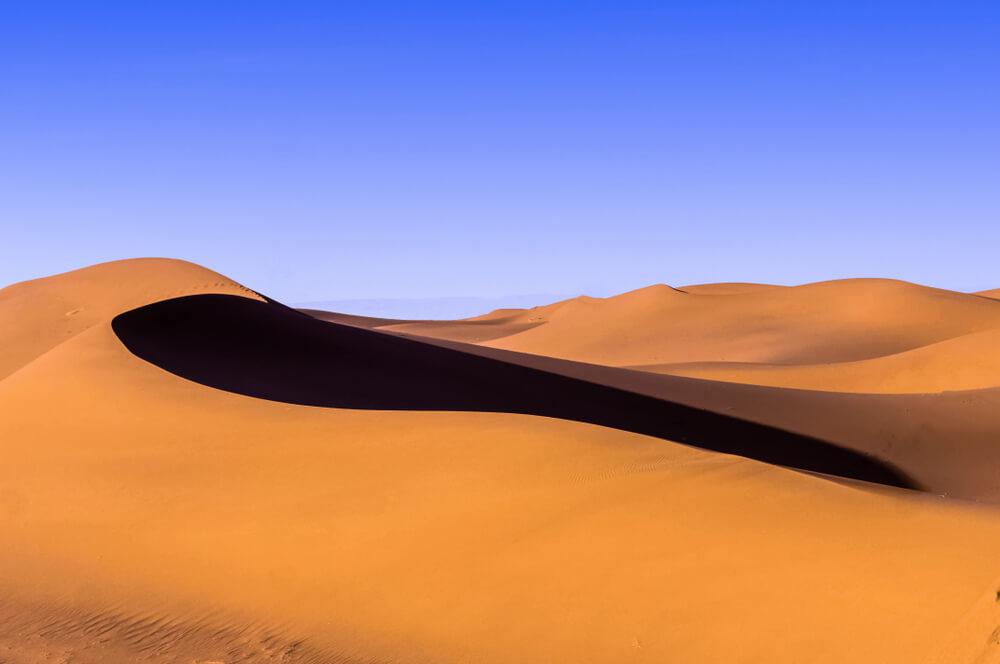
History of Thal desert
Thal Canal Project
The Thal Canal Project’s history began in 1873 when the idea for the project was initially developed for the entire Thal Doab. From 1919 to 1949, the idea of irrigating this region using water from the Indus River was regularly discussed. The concern that it would substantially reduce the water supply to the lower riparians led it to be continually delayed. Pervez Musharraf officially opened the 30-billion-rupee Greater Thal Canal project on August 16, 2001. The Greater Thal Canal Phase project’s second phase, known as the Choubara Branch, began in 2020 that can irrigate 300000 acres of Thal land.
Settlements
Over 15 million individuals left their homes due to the 1947 partition of the Indian subcontinent, which presented a refugee issue to the government of the day. The Punjab Government passed a bill in 1949 creating the Thal Development Authority (TDA), a public company that started working on projects in 1950. The Sheep Breeding Scheme, the Open Auction Scheme, and the Peasant Grant Scheme were just a few of the projects the TDA started. The Peasant Grant Scheme provided a 15-acre inducement for settlement in the Thal desert under various restrictions, one of which required the land to be utilized primarily for agricultural purposes. The program was targeted toward refugees and migrants from India.
A total of 31377 families of migrants and refugees were allowed to reside in over 110 communities built by the TDA throughout its existence. Along with constructing peasant homes and livestock barns, the TDA supplied amenities like post offices and schools.
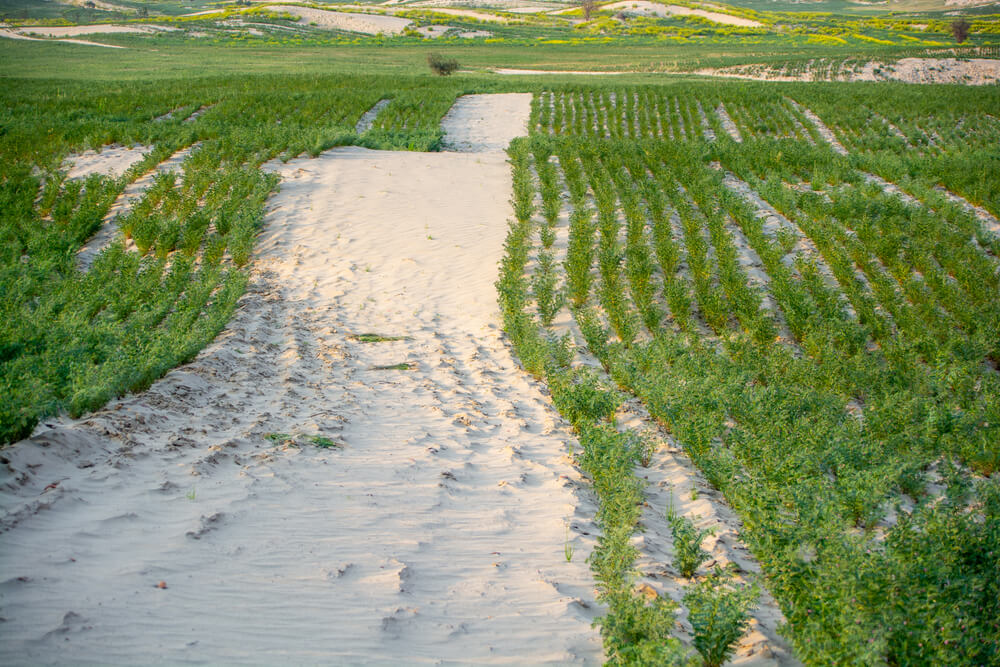
Over 63 000 miles of water canals and over 2000 miles of primary and link highways to connect the new villages were built between 1953 and 1969. Additionally, over 690 000 acres of the Thal land was leveled.
The Canal’s construction, people settling, and land redevelopment for farming purposes have contributed to the region’s growth and altered its environment. The number of grazing land has diminished, and so has the region’s biodiversity.
Geography of Thal Desert
The Pakistani Thal Desert is located around 200 meters above sea level in the north and progressively descends to about 120 meters in the south. It is a sandy, arid, semi-arid environment classified as an agro-ecological zone III. The districts of Bhakkar, Khushab, Mianwali, Jhang, Layyah, and Muzzafargarh, which all share many of the same geological characteristics, are how the desert is broken up. Roda Thal, Mankera, Hyderabad Thal, Dullewala, Piplan, Kundiyan, Chowk Azam, Saraye Muhajir, Mehmood Shaheed Thal, Rang Pur, Jandan Wala, Noor Pur Thal, and Muzafar Garh are some of the major towns in the area that experience the most human activity.
The desert is mainly made up of ridges of dunes, rolling sand plains, and small valleys of flatter, drier land. The Indus River, located upstream of the orogenic front, and the wind have reworked the silt that makes up these dunes, which is a significant characteristic of the zone. They often occupy 50–60% of the Thal desert and can reach about 175 meters.
Quaternary fluvial and eolian deposits over 350 meters thick in the southern sections and significantly more expansive in the desert’s central portion also underlie the area. With some small gravel and isolated mud lenses, the underlying alluvium mainly consists of laterally continuous bodies of fine to coarse sand. The distribution of grain sizes is uneven, with coarser deposits found in the north nearer the Salt Range.
Third Largest Desert of Pakistan
The Thal Desert is Pakistan’s third largest desert. It is located close to the Pothohar Plateau in Punjab, Pakistan, between the Jhelum and Sindh rivers. A rough estimate puts the Thal Desert’s size at 20,000 km2.
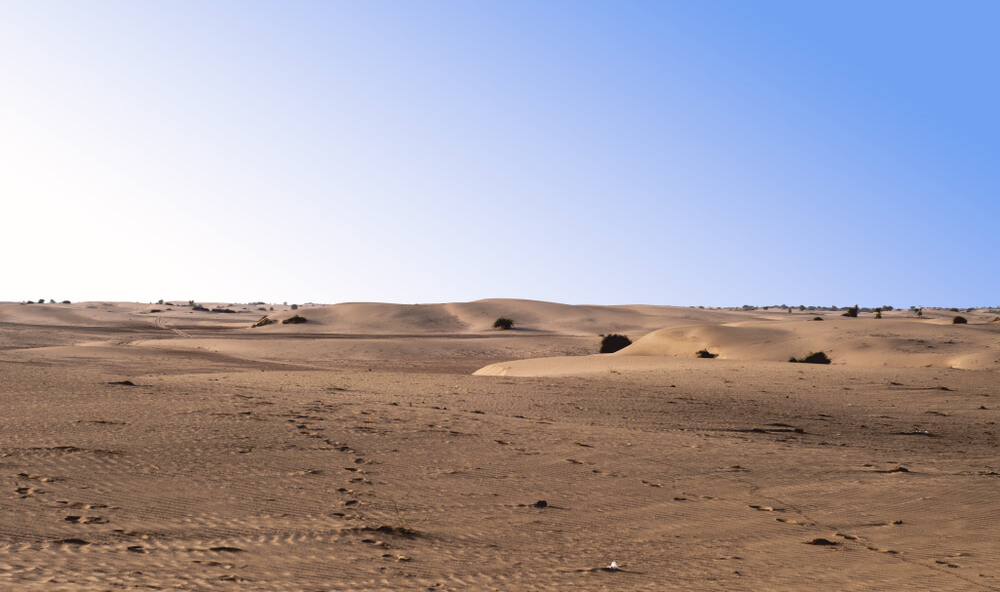
When is the best time to visit Thal?
Thal desert Pakistan experiences a desert climate. The weather is mild to hot during the day and may get rather chilly at night. There won’t be any rain for some time. Thal faces 36°F average annual temps and 92mm of moisture yearly. The average humidity is 34%, with 333 dry days per year, and the UV index is 8.
Pakistan’s Thal is best explored in January, February, November, and December. The temperature is high throughout this time, and there is hardly any precipitation, but it is still bearable compared to other months. May in Thal has an average high temperature of 44°C, while January has an average low temperature of 26°C.
What Should be Packed to Visit Thal Desert?
Something is daring yet incredibly romantic about deserts. From camel riding to sand boarding to stargazing, deserts can be a great holiday destination.
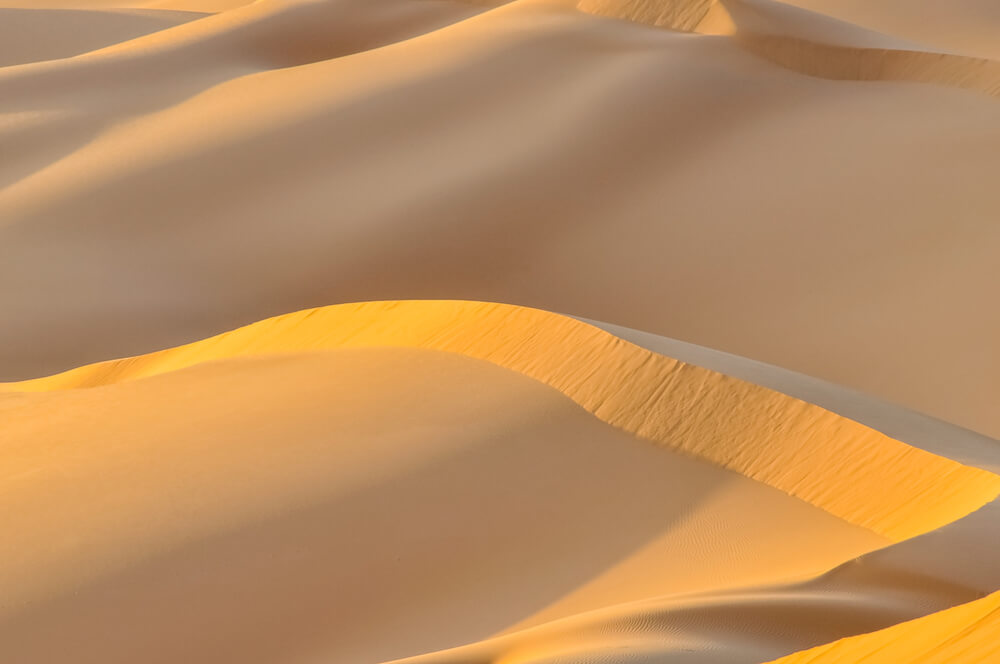
However, due to the harsh weather, it’s also imperative to have the appropriate gear and other necessities with you. The following items are needed for adventures in the Thal Desert Punjab:
Clothing
Shoes
Plenty of water
High-energy food but no salty food
Hats
Umbrella
Bandana
Sunscreen/ Aftersun
Towel
Wipes
Robust backpack
Medical kit
Insect repellent
Packaging the things mentioned above can make your trip to the desert memorable and enjoyable.
Attractions in the Thal Desert
Thal is the third-largest desert in Pakistan in the south of Punjab province. This desert has picturesque creativity and is an excellent visiting area for nature-loving people. The sense of sheer quiet in that inhabited area is the feeling everyone wants to enjoy. This expanse features dunes, scarce rainfall, the difference in daily temperature, and high wind velocity in some months.
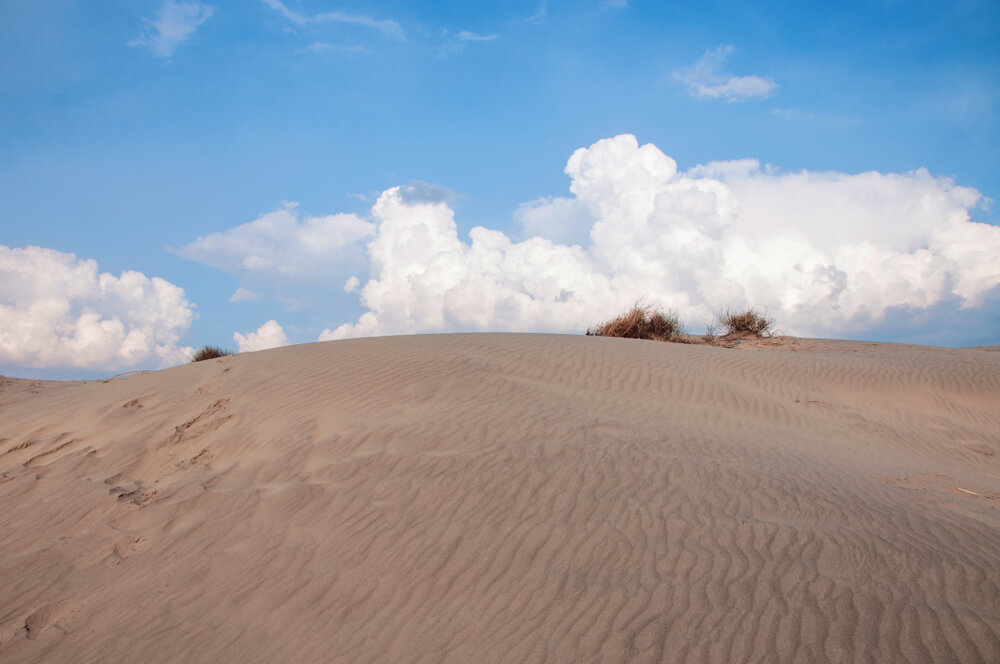
Stunning View of the Desert
On tour to Thal, one becomes closer to Allah when he realizes how tinny he is in the vastness of the universe. People become mesmerized by the stunning view of the desert and start praising Allah Almighty for building this beautiful world. A vast sandy area beneath your foot and a magnificent sky above you is a splendid scene that no one can provide but Thal desert.
Greater Thal Canal
This stunning 35 km long Canal presents a beautiful view with running water and green trees around the length of the Canal. The Thal Canal Project was proposed for the first time in 1873 to enhance the water availability in south Punjab. However, various hurdles came in its building, so it was created in 2001 in the reign of Pervez Musharraf, who invested 30 billion rupees in its construction. Several changes have been made to enhance food security and rural economic growth in Punjab province. It enhances the agricultural production in the Bhakkar, Jhang, Khushab, and Layyah districts of Punjab, decreasing people’s poverty in these areas.
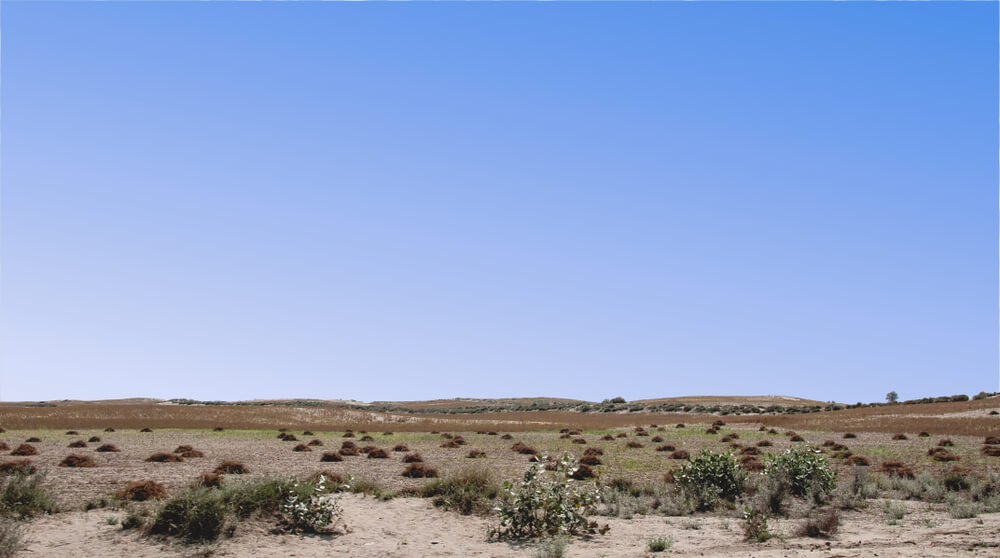
Local Folk Music & Dance
Some nights, people of the Thal desert sing their folk music, usually in the Siriki language. The beautiful voice of the singer with the sound of tabla and sitar feels peaceful for the mind and heart. The folk dance of a group of people is such a beautiful dance that no words describe it. They dance beautifully and elegantly, and one can feel it just by viewing them, not by any explanation.
Things to Do at the Thal Desert
Thal desert is an excellent point of attraction for tourists. There are many activities arranged by locals here to please natives and tourists. All can enjoy these activities and also can take part in them. These actions are part of their culture, and all are in the ethical range.
Camping in the Thal Desert
A visit to any desert without enjoying camping is meaningless. Hence the desert also offers camping perks to tourists. A large area is available for setting up and staying in a camp. It is best for camping because it is a tranquil place and one can meet himself in this peaceful environment. So visit and enjoy camping in the stunning Thal Desert.
Desert Safari
Desert safari is a guided excursion with a four-wheel drive vehicle that takes people to the Thal desert. It also offers other activities like camel rides so that people can enjoy the expedition of the ship of the desert.
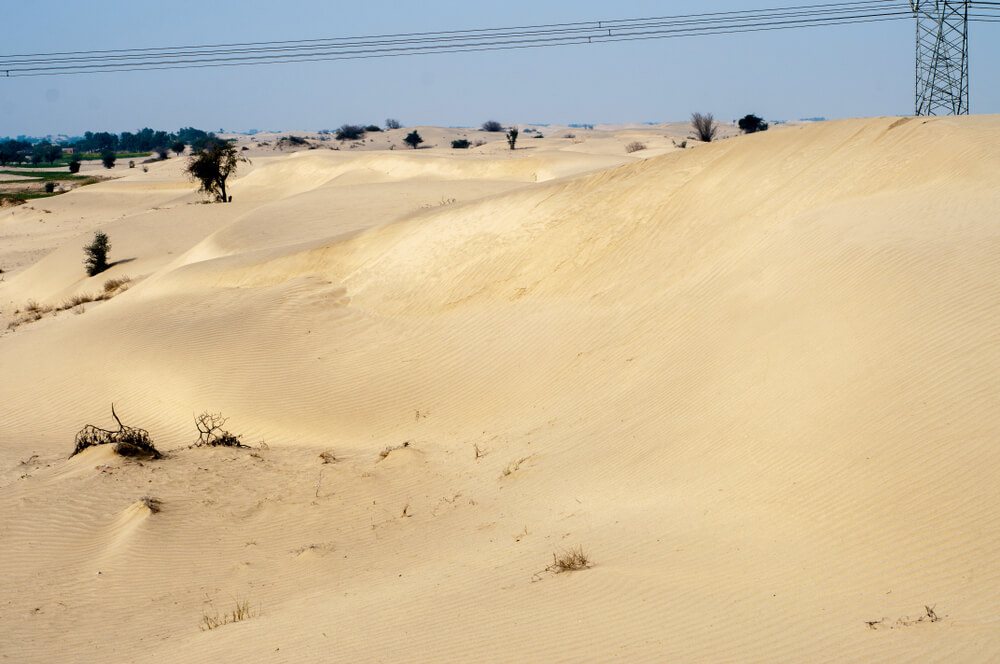
Walking in the Desert
Walking barefoot on the soft sand of the Thal desert gives inner peace and calm. Chat and a long walk with a friend or partner is the beautiful feeling everyone misses after leaving this place.
How to Reach Thal Desert, Pakistan?
Everyone can reach Thal desert in their vehicles or local transport. Reach any bus stop or railway station of any district covering the Thal desert. From there, hire a jeep to reach the Thal desert because jeeps are best for traveling in a sandy area.
Thal Jeep Rally Festival
The annual jeep rally events are the Thal desert’s main tourist attractions. TDCP manages this event, and various men and women participate in this rally. TDCP has taken many steps to make it an excellent rally to attract tourists. The rally commences from Head Muhammad Wala, and winners are awarded cash prizes. People from across the world come here every year to enjoy this rally. There are various hotels like Latif Baloch, Bala, and Asad herein, where people stay when they visit Thal for the jeep rally festival.
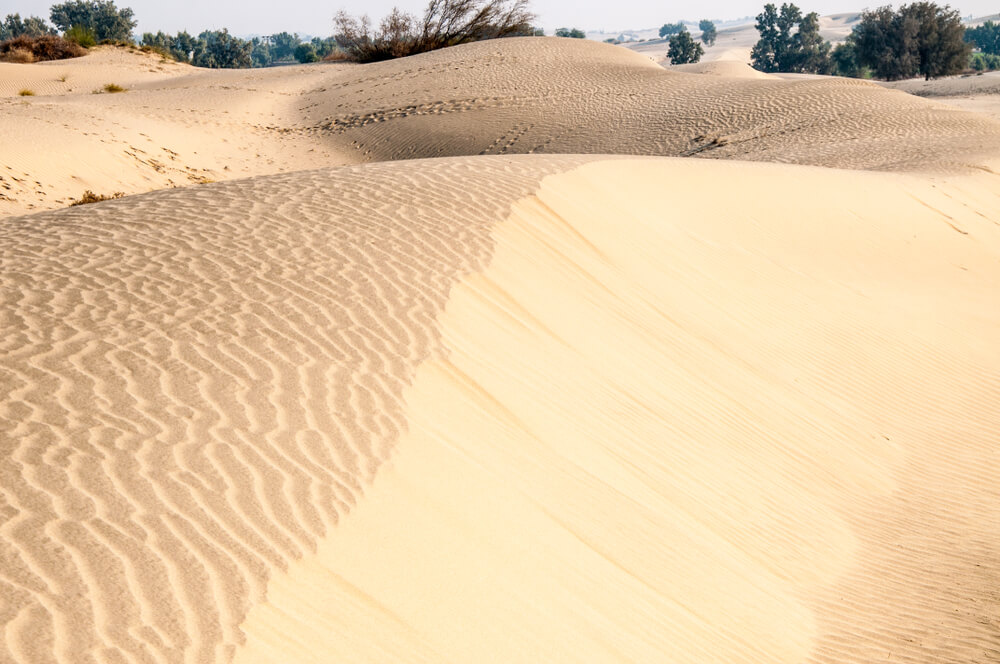
Mela Inayat Shah in Thal Desert
Mela Inayat Shah has occurred in the small village of Layyah for the past 150 years. This cultural festival is celebrated when spring arrives in Fatehpur. The dancing of camels and the dance of men called Jhumer are the pleasant sights for which visitors attend this festival. Thousands of rovers decorate Heightened and intense camels and migrate from different parts of Pakistan to participate in this Celebration. This event not only produces business opportunities for local people but also makes room for all to connect & resuscitate their traditional values. Most people are uneducated, but they give a message of peace, harmony, friendship, and love which even sometimes educated people to do not.
Economic Importance of Thal Desert
The primary source of revenue for people living in the Thal desert is agriculture and livestock rearing. Farmers use underground water through tubewell or water from the Thal canal for growing wheat, which is the staple food here. Other crops include gram and cotton, which are essential for the economic stability of Pakistan.
Location of Thal Desert
Thal desert is situated nearby the Pothohar Plateau, sandwiched between the Jhelum and Sindh rivers in Pakistan.
FAQs
Is the Cholistan and the Thal Desert the Same?
Pakistan contains five beautiful and mesmerizing deserts with distinct regions and characteristics. Cholistan and Thal are not the names of the same desert, they are different deserts. The Cholistan desert is in the periphery of Bahawalpur, while the Thal desert is in other districts in Punjab.
How much is the Total Area of Thal Desert?
The Thal Desert encompasses an area of approximately 20000 km2 of Punjab. Its length is almost 305 kilometers, while its breadth ranges from 32 to 112 kilometers in various regions.
How many Districts are Covered in the Thal Desert?
From the left bank of the Jhelum River, the Thal desert covers six districts of Punjab. These are Bhakkar, Khushab, Mianwali, Layyah, Muzaffargarh, and Jhang, and so all these districts are connected because of having a treasure in the shape of a desert.
What is the local Language of People Living in that desert?
Urdu, Saraiki, and Punjabi are the common languages of people living in the Thal Desert. Educated people mostly speak Urdu in this region.
Conclusion
Thal desert is an excellent place to enjoy holidays. All should visit this place with family or friends because it is safe with humble local natives.
